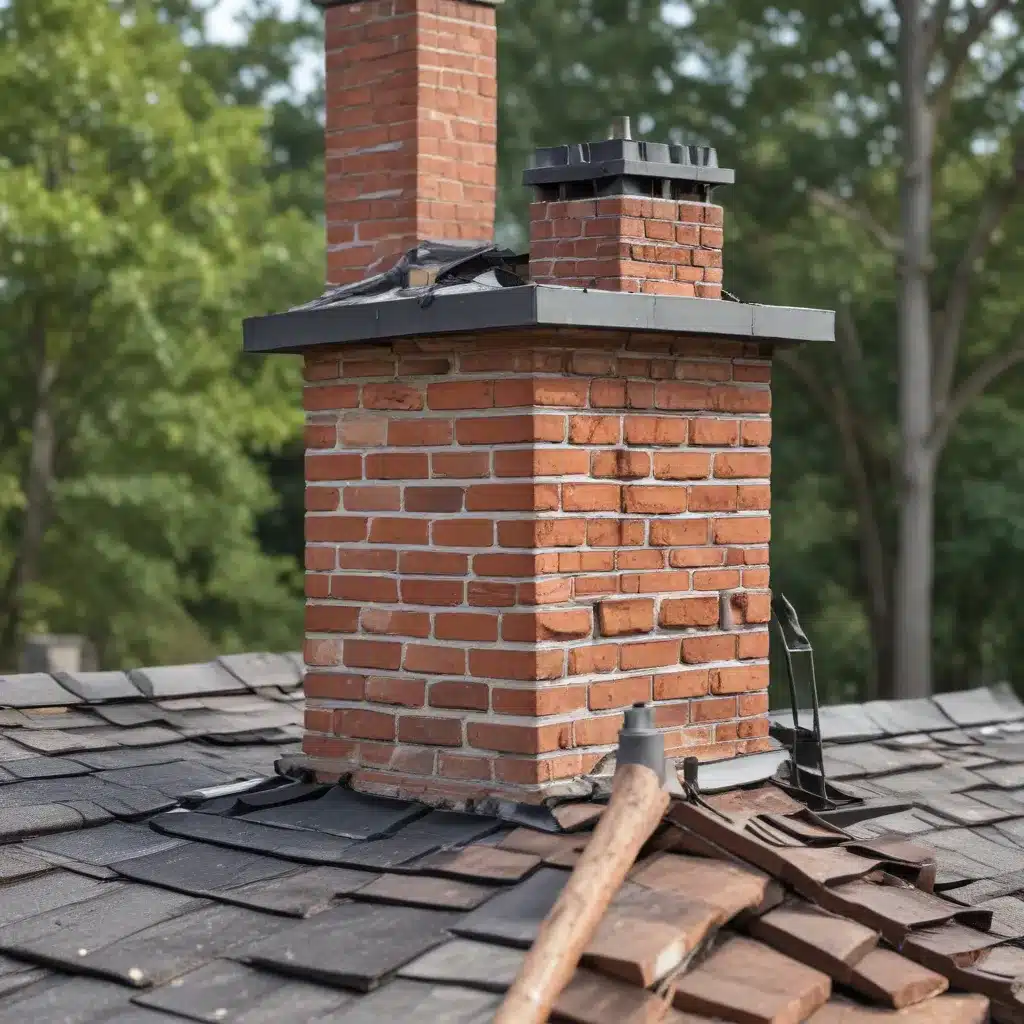
Fortifying Your Home’s First Line of Defense
As winter rapidly approaches, it’s time for homeowners to turn their attention to the vital task of preparing their homes for the harsh elements that lie ahead. While many focus on weatherizing windows, insulating attics, and servicing heating systems, one often overlooked area is the critical role of the humble chimney in maintaining a home’s resiliency.
As a seasoned roofing professional, I’m here to share practical tips and in-depth insights on how to properly maintain your chimney and ensure your entire home is ready to weather the storms of the coming season. By taking a proactive approach to chimney care, you can not only safeguard your property but also improve your home’s overall energy efficiency and safety.
Chimney Maintenance: Preventing Costly Disasters
The chimney is often the first line of defense against the elements, protecting your home from the damaging effects of rain, snow, and high winds. Neglecting this vital component can lead to a cascade of problems, from water leaks and structural damage to dangerous fire hazards.
To keep your chimney in top shape, begin by scheduling a professional inspection and cleaning. A certified chimney sweep will thoroughly examine the flue, identifying any cracks, creosote buildup, or other issues that could compromise its performance. They can also provide invaluable guidance on the necessary repairs or upgrades to ensure your chimney is ready for the winter ahead.
Remember, regular chimney maintenance is not only a smart investment but also a critical safety measure. Ensuring your chimney is clear of obstructions and properly venting can prevent the buildup of hazardous gases, such as carbon monoxide, which can pose a serious threat to your family’s well-being.
Optimizing Chimney Performance for Energy Efficiency
Beyond safety, maintaining your chimney can also have a significant impact on your home’s energy efficiency. A well-functioning chimney helps to regulate airflow, ensuring that your heating system operates at peak performance and minimizing heat loss.
One effective strategy is to consider the installation of a chimney liner. These specialized liners, typically made of stainless steel or clay tiles, can greatly improve the chimney’s thermal efficiency, reducing the amount of heated air that escapes through the flue. By upgrading to a high-performance liner, you can potentially see a noticeable difference in your energy bills and overall home comfort.
Additionally, ensuring that your chimney damper is in proper working order is crucial. A well-sealed damper can prevent cold air from entering your home through the fireplace, further enhancing your energy savings. Regular inspections and, if necessary, repairs or replacements of the damper mechanism can go a long way in optimizing your chimney’s efficiency.
Preparing for the Unexpected: Enhancing Home Resiliency
In today’s era of unpredictable weather patterns and increasingly severe storms, homeowners must take a proactive approach to protecting their properties. The chimney plays a vital role in this regard, as it can be a critical weak point in your home’s defenses against the elements.
One crucial step is to carefully inspect your chimney for any signs of damage or structural instability. Look for cracks, loose bricks or mortar, and signs of weathering or erosion. These issues can compromise the chimney’s ability to withstand high winds, heavy snow loads, and other extreme weather events, potentially leading to a catastrophic failure.
If you identify any concerns, it’s essential to address them promptly by engaging the services of a reputable roofing contractor or masonry specialist. They can assess the extent of the damage and recommend the most appropriate repair solutions, whether it’s repointing the mortar, reinforcing the structure, or even replacing the entire chimney.
Complementing Chimney Maintenance with Roof Resilience
While the chimney is a critical component, it’s important to remember that it’s just one part of your home’s overall resilience. Ensuring that your roof is also well-maintained and prepared for the harsh winter conditions is equally important.
Roofersinnorthampton.co.uk recommends regular inspections to identify any loose, damaged, or missing shingles, as well as ensuring that your gutters and downspouts are clear of debris. These simple steps can go a long way in preventing water infiltration, ice dams, and other winter-related roof issues that can compromise your home’s structural integrity.
Additionally, consider upgrading to roofing materials that are specifically designed to withstand severe weather conditions. Impact-resistant shingles, for example, can provide an extra layer of protection against hail, while metal roofing systems can better withstand the weight of heavy snow accumulations.
By taking a comprehensive approach to your home’s resilience, focusing on both the chimney and the roof, you can rest assured that your property is prepared to weather the storms of the coming season and beyond.
Embracing Proactive Maintenance: The Key to Long-Term Savings
Maintaining your home’s chimney and overall resilience may require an initial investment, but the long-term benefits are well worth the effort. By addressing potential issues before they escalate into costly repairs, you can avoid the financial burden of unexpected damages and ensure your home remains a safe, comfortable, and energy-efficient haven for years to come.
Remember, being a proactive homeowner is not just about protecting your property – it’s about safeguarding your family’s well-being and preserving the value of your most significant investment. So, don’t wait until the first snowfall to start thinking about your chimney and home’s resilience. Take action now, and enjoy the peace of mind that comes with knowing your home is prepared to face the challenges of the winter season and beyond.

